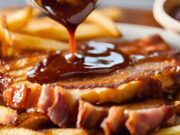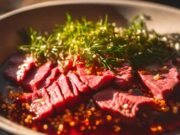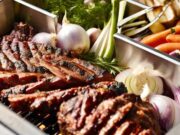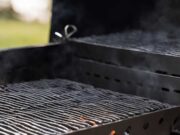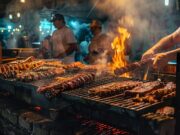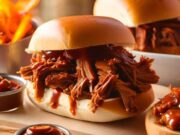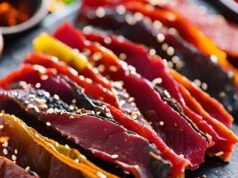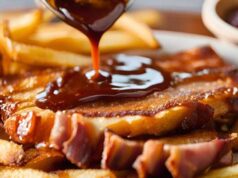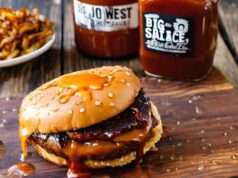Barbecue brisket serves as a mouthwatering centerpiece that can elevate any gathering, but mastering this culinary art requires both knowledge and skill.
This guide provides a comprehensive overview of everything you need to know—from understanding the various cuts of brisket and selecting the best option to preparation techniques and the smoking process.
You will discover essential tips for achieving the perfect internal temperature, properly resting your brisket, and serving it to perfection.
Furthermore, common mistakes to avoid are outlined, ensuring that your BBQ brisket consistently impresses your guests.
Key Takeaways:
- Understanding the different cuts and characteristics of brisket is crucial for achieving the perfect BBQ brisket.
- Choosing the right brisket, preparing it properly for smoking, and using the right smoking techniques are key factors in creating a delicious brisket.
- Low-and-slow smoking, achieving the perfect internal temperature, and allowing the brisket to rest are essential steps for a perfectly cooked BBQ brisket.
Understanding Brisket: Cuts and Characteristics
Understanding brisket requires recognizing its two main cuts: the point and the flat. Each cut possesses unique characteristics that significantly contribute to its overall flavor and texture.
The point cut, known for its higher fat content and tenderness, is valued for its juicy texture. In contrast, the flat cut provides a leaner option with a more uniform thickness, which makes it ideal for slicing.
Moreover, the connective tissue present in both cuts, primarily composed of collagen, is essential in the transformation of the meat during the cooking process, ultimately leading to a rich and flavorful BBQ experience.
Choosing the Right Brisket
Choosing the right brisket is crucial for achieving excellent BBQ results, and this process begins with selecting high-quality meat, preferably from grass-fed cattle or British cows, to enhance both flavor and tenderness.
When shopping for brisket, you should look for well-marbled cuts that indicate a higher fat content, as this contributes to the juicy outcome you desire in slow-cooked BBQ. Understanding the various grades of brisket can aid you in making informed decisions based on your cooking methods and desired flavor profile.
The significance of sourcing brisket from reputable suppliers cannot be overstated, as it often has a direct impact on the meat’s overall quality. Seek out suppliers who prioritize ethical farming practices and consistency in their sourcing; this can greatly influence the flavor and texture of the brisket.
Choosing cuts from well-fed cattle ensures robust marbling, which is an essential characteristic that affects both the cooking process and the final taste. For those utilizing methods that require long cooking times, such as smoking or braising, selecting an optimal brisket will enhance not only the flavor but also the tenderness, making your effort truly worthwhile.

Preparing Your Brisket for Smoking
Preparing your brisket for smoking is a critical step that significantly impacts the final flavor and texture. Start with proper trimming to ensure an even cooking process. Remove excess fat from the surface while leaving a thin layer to retain moisture during cooking.
Once trimmed, seasoning the brisket with a blend of herbs and spices is essential, as it enhances the overall flavor and contributes to the formation of a beautiful bark when smoked. This preparation stage sets the tone for how the brisket will absorb flavors and develop its characteristic tenderness.
Next, consider using a marinade or a dry rub that may include ingredients like paprika, garlic powder, or even brown sugar to add a hint of sweetness. It is important to allow the seasoned brisket to sit for a few hours or even overnight, as this will enable the flavors to penetrate the meat more deeply.
Understanding the balance between fat and moisture is vital; the right amount of fat will melt away during the smoking process, keeping the meat juicy and adding richness to each bite. By carefully following these steps, the brisket will not only emerge flavor-packed but will also showcase an impressive texture that is sure to impress your guests.
The Smoking Process
The smoking process is central to BBQ brisket preparation, where low-and-slow techniques are often contrasted with hot-and-fast methods, each producing unique results in flavor and tenderness.
Whether utilizing a pellet grill or a traditional smoker, your goal should be to maintain a consistent temperature while closely monitoring the internal temperature of the meat using a probe or meat thermometer.
Understanding the cooking time and effectively managing moisture is crucial for achieving a juicy brisket that melts in your mouth. Thus, the smoking process requires a delicate balance of both art and science.
Low-and-Slow vs. Hot-and-Fast
When considering the cooking of brisket, the debate between low-and-slow and hot-and-fast techniques is a critical factor that significantly influences the final quality of the meat.
Each method has its dedicated advocates, with enthusiasts often exhibiting strong preferences for their chosen approach. Low-and-slow cooking is highly regarded for its ability to enhance the natural flavors of the brisket, resulting in a deep, rich taste profile. This technique also allows ample time for smoke penetration, which is essential for developing the signature barbecue flavor.
Conversely, the hot-and-fast method provides the advantage of a quicker turnaround, making it an appealing option for those with time constraints. However, achieving the ideal bark and moisture retention can be challenging and requires considerable experience and careful monitoring.
Ultimately, the choice between these techniques can significantly impact the overall dining experience, making it essential to understand their distinct characteristics.
Achieving the Perfect Internal Temperature
Achieving the perfect internal temperature is critical when cooking brisket, and using a reliable meat thermometer or probe will help ensure precise monitoring throughout the cooking process. The ideal internal temperature for brisket typically falls between 195°F and 205°F. This range allows the collagen within the meat to break down effectively, resulting in the desired tenderness while retaining moisture.
This stage requires patience and attention, as each brisket is unique and may necessitate slight adjustments in cooking time based on its size and thickness.
By closely monitoring the internal temperature, you can manage the delicate balance between undercooking, which risks toughness, and overcooking, which may lead to dryness. It is essential to source a dependable thermometer that provides quick and accurate readings, as this can significantly influence the overall outcome of the dish.
Brisket benefits from being cooked at lower temperatures for extended periods, allowing the flavors to deepen and the juices to circulate, which enhances both taste and texture. Understanding these temperature thresholds will also enable you to plan your cooking times more effectively, ensuring a well-timed meal that will impress your guests and satisfy their cravings.
Resting Your Brisket
Resting your brisket after cooking is a crucial step that significantly enhances its tenderness and juiciness by allowing the juices to redistribute throughout the meat. Once you remove the brisket from the smoker or grill, it should rest for at least 30 minutes, ideally wrapped in foil to maintain warmth while preventing moisture loss. This resting period not only enhances the flavor but also contributes to food safety by ensuring that the meat cools evenly and reduces the risk of bacterial growth.
During this important time, the internal temperature of the brisket will gradually drop, allowing the flavors to meld together beautifully. Proper resting helps retain moisture, preventing the meat from becoming dry when sliced. For optimal results, consider extending the resting period for a thicker brisket, sometimes up to two hours. Placing the brisket in a warm area, away from drafts, can further improve its quality.
When it’s time to serve, slice against the grain to maximize tenderness, keeping in mind that a well-rested brisket offers an unforgettable combination of rich flavor and irresistible texture.
Serving Suggestions and Pairing
When serving BBQ brisket, the right pairing and presentation can significantly enhance the dining experience, creating a memorable meal for your guests.
Consider serving brisket alongside classic sides such as:
- coleslaw
- pickles
- cornbread
Additionally, explore various sauces and seasoning options that complement the meat’s flavor profile. Garnishing with fresh herbs can elevate the visual appeal and provide a burst of freshness that balances the richness of the brisket.
To truly enhance the flavor experience, crispy fried onions or seasoned potato wedges serve as excellent accompaniments, adding both texture and taste. For sauces, a tangy vinegar-based barbecue sauce can introduce a lively kick, while a rich, smoky blend with hints of molasses or apple cider will deepen the flavors of the brisket.
Experimenting with sides like baked beans can add a sweetness that pairs beautifully, creating a harmonious blend of flavors. Incorporating grilled vegetables will contribute to a vibrant, colorful plate that delights both the eye and the palate.
Common Mistakes to Avoid
While preparing BBQ brisket can be a rewarding experience, several common mistakes may hinder your outcome, potentially leading to tough, dry, or flavorless meat. One frequent challenge is the failure to properly monitor cooking temperature, which can result in either inadequate tenderness or overcooked brisket. Additionally, neglecting food safety practices—such as proper storage and handling of the meat—is critical for ensuring a safe and enjoyable meal.
To achieve a mouthwatering brisket, it is essential to invest time in understanding different cooking techniques that can elevate the dish. For instance, utilizing a meat thermometer can help you maintain the ideal internal temperature, ensuring that the brisket is cooked to perfection without losing its juiciness. Marinating the meat and allowing it to rest before slicing can enhance flavor and improve texture, helping you sidestep the common pitfalls associated with this beloved barbecue cut.
Remember, patience is key; rushing the process often leads to disappointing results.
Frequently Asked Questions
What is the best cut of meat to use for BBQ brisket?
The best cut of meat to use for BBQ brisket is typically a whole packer brisket, which includes both the point and flat cuts. This ensures a good balance of fat and meat for a moist and flavorful brisket.
What is the ideal cooking temperature for BBQ brisket?
The ideal cooking temperature for BBQ brisket is between 225-250 degrees Fahrenheit. This low and slow method allows the meat to cook slowly and evenly, resulting in a tender and juicy brisket.
How long should I cook BBQ brisket?
Cooking time for BBQ brisket can vary due to factors such as the size and type of brisket, as well as the cooking temperature. However, a general rule of thumb is to allow 1.5 hours of cook time for every pound of brisket, or until the internal temperature reaches 195-203 degrees Fahrenheit.
How do I prevent my BBQ brisket from drying out?
To prevent your BBQ brisket from drying out, make sure to wrap it in foil or butcher paper during the cooking process. This helps to trap in moisture and keeps the brisket from drying out. You can also baste the brisket with a flavorful liquid, such as beef broth or apple juice, throughout the cooking process.
What are some tips for achieving the perfect bark on BBQ brisket?
To achieve a perfect bark on your BBQ brisket, make sure to use a good rub with a balance of salt, sugar, and spices. Also, make sure to let the brisket rest for at least 30 minutes after cooking, which allows the juices to redistribute and the bark to set.
Can I make BBQ brisket in the oven instead of a smoker?
Yes, you can make BBQ brisket in the oven instead of a smoker. Simply follow the same cooking temperature and time recommendations, and make sure to wrap the brisket in foil or butcher paper to trap in moisture. However, the smoke flavor will not be as prominent as using a smoker.








